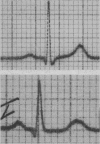Abstract
OBJECTIVE--To investigate the prognostic value of frequently occurring slight variations in the ST segment for cardiovascular mortality in healthy subjects. DESIGN--Follow up study of mortality in relation to variations in ST segment level in a cohort over the 28 years from 1953 to 1981. A case-cohort sampling design was applied to limit the number of electrocardiograms that had to be coded by hand. SETTING--General health examination carried out in 1953 of civil servants in Amsterdam and assessment of subsequent mortality. SUBJECTS--Apparently healthy civil servants aged 40 to 65 years: 1583 men and 1508 women. MAIN OUTCOME MEASURES--Relative risk of variations in ST segment level for mortality from all causes, cardiovascular disease, and coronary heart disease. RESULTS--In men the multivariate relative risks of 15 year mortality from cardiovascular disease and coronary heart disease of slight ST elevation at 80 ms past the J point (compared with isoelectric ST segment) were 0.5 (95% confidence interval 0.3 to 0.9) and 0.4 (0.2 to 0.8), respectively. As expected, ST segment depression (greater than 0.25 mm) was associated with increased risk: 1.9 (1.1 to 3.0) and 2.2 (1.2 to 3.9), respectively. In women associations were weaker. The full 28 year period showed a similar pattern of somewhat weaker associations for men; among women, however, no predictive value was apparent. CONCLUSION--These results are empirical evidence for the intuitive opinion among doctors that a curved, upward sloping ST segment, resulting in slight ST elevation at 80 ms, indicates low risk compared with the isoelectric flat, stretched ST segment.
Full text
PDF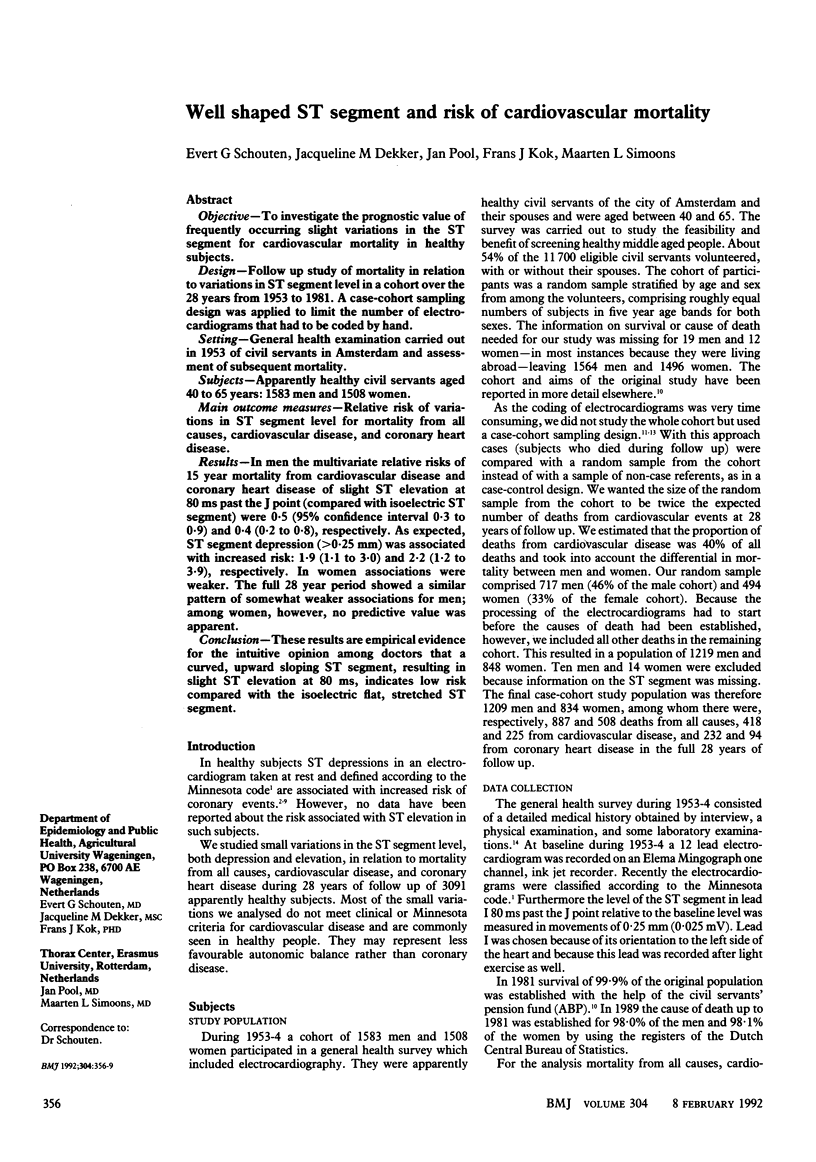
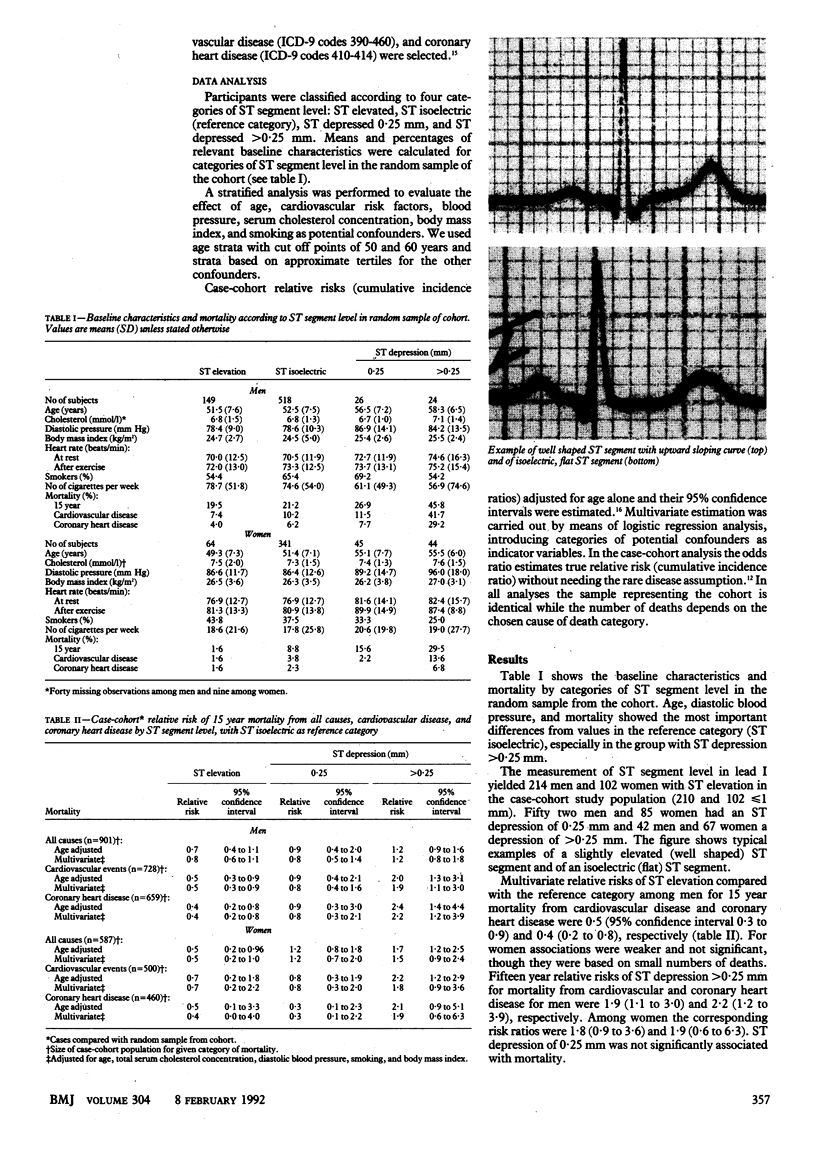
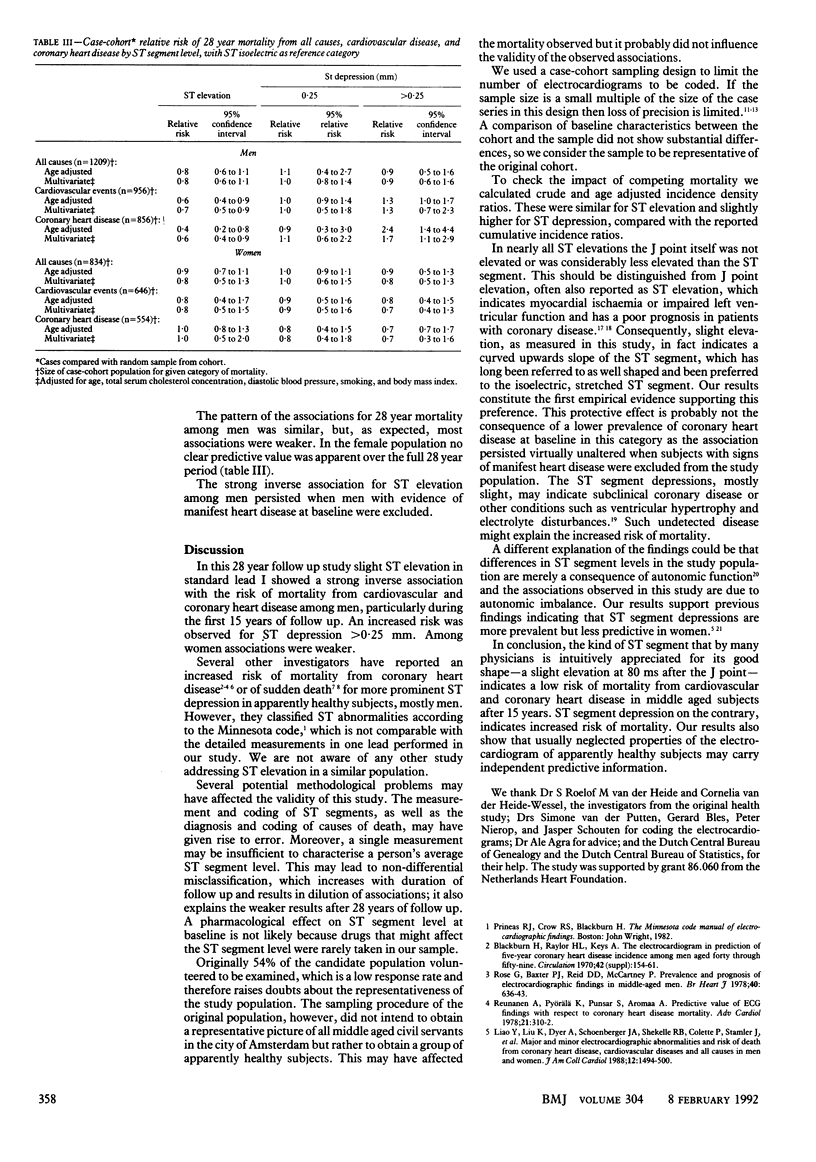
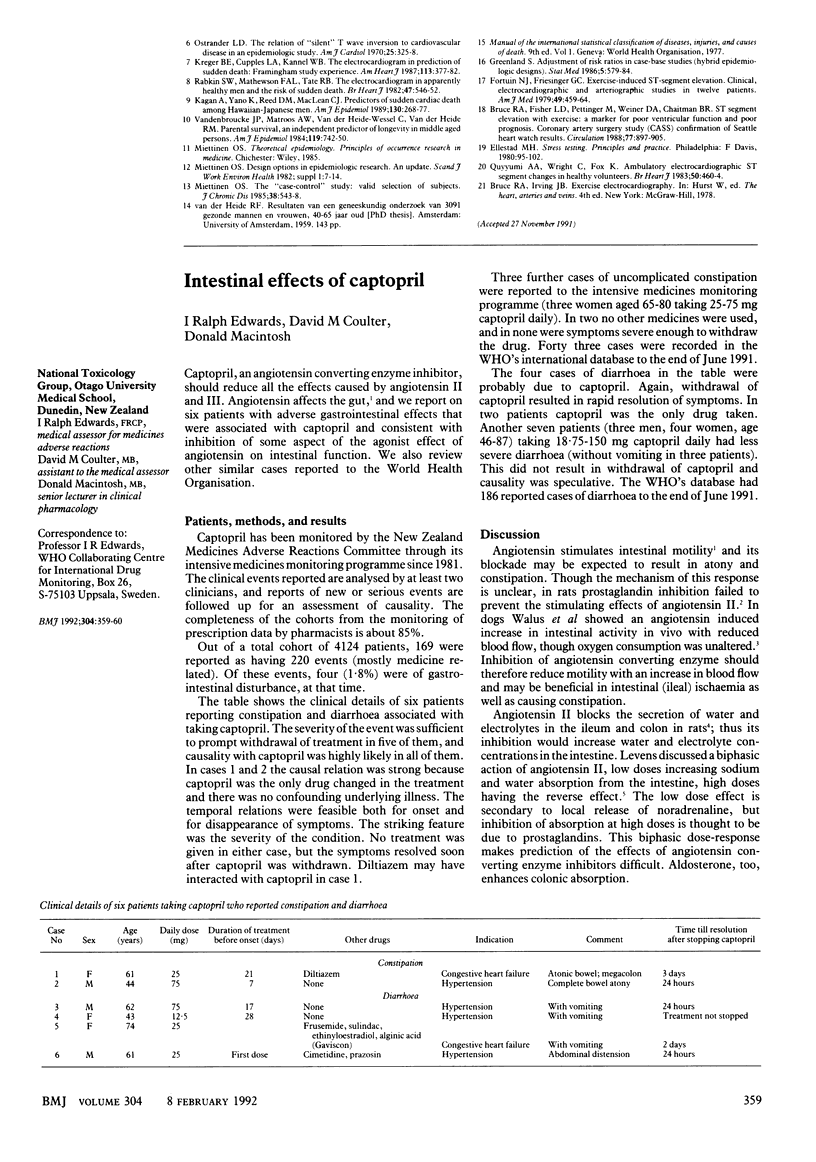
Images in this article
Selected References
These references are in PubMed. This may not be the complete list of references from this article.
- Bruce R. A., Fisher L. D., Pettinger M., Weiner D. A., Chaitman B. R. ST segment elevation with exercise: a marker for poor ventricular function and poor prognosis. Coronary Artery Surgery Study (CASS) confirmation of Seattle Heart Watch results. Circulation. 1988 Apr;77(4):897–905. doi: 10.1161/01.cir.77.4.897. [DOI] [PubMed] [Google Scholar]
- Fortuin N. J., Friesinger G. C. Exercise-induced S-T segment elevation. Clinical, electrocardiographic and arteriographic studies in twelve patients. Am J Med. 1970 Oct;49(4):459–464. doi: 10.1016/s0002-9343(70)80039-0. [DOI] [PubMed] [Google Scholar]
- Kagan A., Yano K., Reed D. M., MacLean C. J. Predictors of sudden cardiac death among Hawaiian-Japanese men. Am J Epidemiol. 1989 Aug;130(2):268–277. doi: 10.1093/oxfordjournals.aje.a115333. [DOI] [PubMed] [Google Scholar]
- Kreger B. E., Cupples L. A., Kannel W. B. The electrocardiogram in prediction of sudden death: Framingham Study experience. Am Heart J. 1987 Feb;113(2 Pt 1):377–382. doi: 10.1016/0002-8703(87)90281-x. [DOI] [PubMed] [Google Scholar]
- Liao Y. L., Liu K. A., Dyer A., Schoenberger J. A., Shekelle R. B., Colette P., Stamler J. Major and minor electrocardiographic abnormalities and risk of death from coronary heart disease, cardiovascular diseases and all causes in men and women. J Am Coll Cardiol. 1988 Dec;12(6):1494–1500. doi: 10.1016/s0735-1097(88)80016-0. [DOI] [PubMed] [Google Scholar]
- Miettinen O. S. The "case-control" study: valid selection of subjects. J Chronic Dis. 1985;38(7):543–548. doi: 10.1016/0021-9681(85)90039-6. [DOI] [PubMed] [Google Scholar]
- Miettinen O. Design options in epidemiologic research. An update. Scand J Work Environ Health. 1982;8 (Suppl 1):7–14. [PubMed] [Google Scholar]
- Ostrander L. D., Jr The relation of "silent" T wave inversion to cardiovascular disease in an epidemiologic study. Am J Cardiol. 1970 Mar;25(3):325–328. doi: 10.1016/s0002-9149(70)80010-8. [DOI] [PubMed] [Google Scholar]
- Quyyumi A. A., Wright C., Fox K. Ambulatory electrocardiographic ST segment changes in healthy volunteers. Br Heart J. 1983 Nov;50(5):460–464. doi: 10.1136/hrt.50.5.460. [DOI] [PMC free article] [PubMed] [Google Scholar]
- Rabkin S. W., Mathewson F. L., Tate R. B. The electrocardiogram in apparently healthy men and the risk of sudden death. Br Heart J. 1982 Jun;47(6):546–552. doi: 10.1136/hrt.47.6.546. [DOI] [PMC free article] [PubMed] [Google Scholar]
- Reunanen A., Pyörälä K., Punsar S., Aromaa A. Predictive value of ECG findings with respect to coronary heart disease mortality. Adv Cardiol. 1978;21:310–312. doi: 10.1159/000400471. [DOI] [PubMed] [Google Scholar]
- Rose G., Baxter P. J., Reid D. D., McCartney P. Prevalence and prognosis of electrocardiographic findings in middle-aged men. Br Heart J. 1978 Jun;40(6):636–643. doi: 10.1136/hrt.40.6.636. [DOI] [PMC free article] [PubMed] [Google Scholar]
- Vandenbroucke J. P., Matroos A. W., van der Heide-Wessel C., van der Heide R. M. Parental survival, an independent predictor of longevity in middle-aged persons. Am J Epidemiol. 1984 May;119(5):742–750. doi: 10.1093/oxfordjournals.aje.a113795. [DOI] [PubMed] [Google Scholar]



